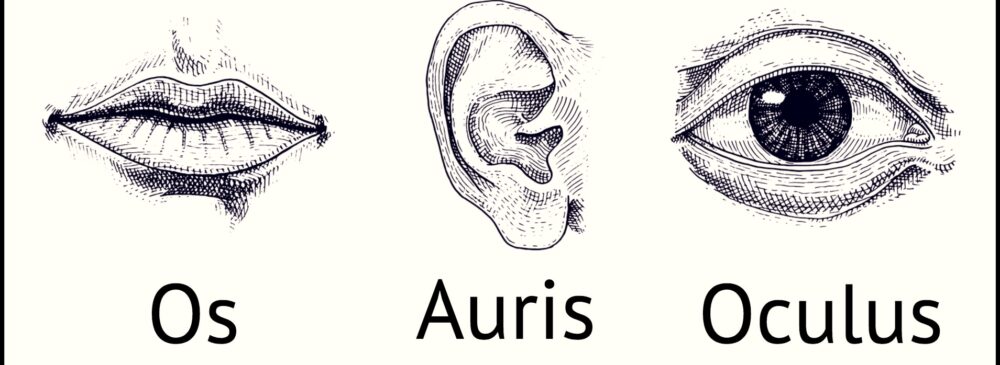The Anatomical Latin Dictionary on this website is formatted similar to a Latin dictionary. The following will help you to understand this format.
Nouns
The first word in each Latin dictionary entry is the nominative singular form of the noun.
vena, -ae, f. vein
corpus, corporis, n. body
The second piece of information in a Latin dictionary entry is the genitive singular form of the noun. This is important information because the genitive singular reveals which declension the noun belongs to. For third declension nouns, the genitive singular also reveals the root of the noun, which is not evident in the nominative singular for many of these nouns.
vena, -ae, f. vein
corpus, corporis, n. body
The third piece of information in a Latin dictionary entry is the gender of the noun (neuter = n., feminine = f. and masculine = m.).
vena, -ae, f. vein
corpus, corporis, n. body
The fourth piece of information in a Latin dictionary entry is the meaning of the Latin word.
vena, -ae, f. vein
corpus, corporis, n. body
Adjectives
The Latin dictionary entries for nouns and adjectives are distinguishable by their basic format. Latin dictionary entries for nouns provide the genitive singular form of the noun and the gender of the noun. Latin dictionary entries for adjectives simple provide the nominative singular forms of the adjective.
Noun: corpus, corporis, n. body Adjective: corporalis, -e, corporal
First and Second Declension Type Adjectives: The dictionary entries for the first and second declension type adjectives show the nominative singular endings (masculine, feminine, and neuter) of the adjective in the following way:
externus, -a, -um external =
externus (masc., nom., sing.), externa (fem., nom., sing.) externum (neut., nom., sing.)
sinister, -tra, -trum left =
sinister (masc., nom., sing.), sinistra (fem., nom., sing.), sinistrum (neut., nom., singular)
Third Declension Type Adjectives: The dictionary entries for third declension adjectives are the nominative (masculine, feminine, and neuter) singular endings for these adjectives.
medialis, -e, medial (toward the middle) =
medialis (masc., or fem., nom., sing.),mediale (neut., nom., sing.)
Comparative Adjectives: The dictionary entries for a comparative adjective is as follows:
inferior, -us, inferior, more below =
inferior (masc. or fem., nom., sing.), inferius (neut., nom., sing.)
major, -us, greater
major (masc. or fem., nom., sing.),majus (neut., nom., sing.)
Participles: Active participles are declined like third declension adjectives. However, unlike the previous third declension adjectives they have one inflectional ending for the masc., fem., and neut. in the singular nominative case.
afferens, afferent (carrying toward)
communicans,communicant(sharing, communicating)
reuniens, reunient (joining again, reuniting)
